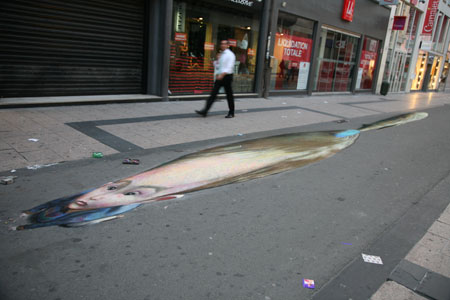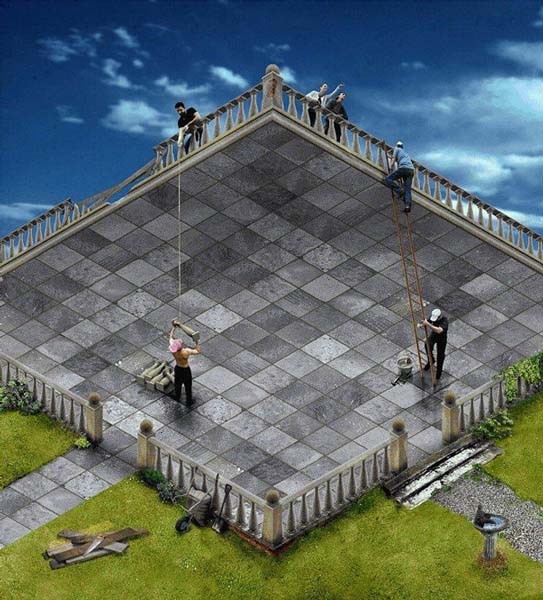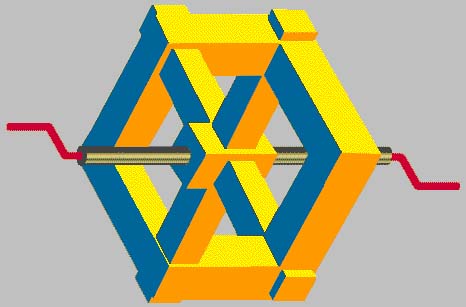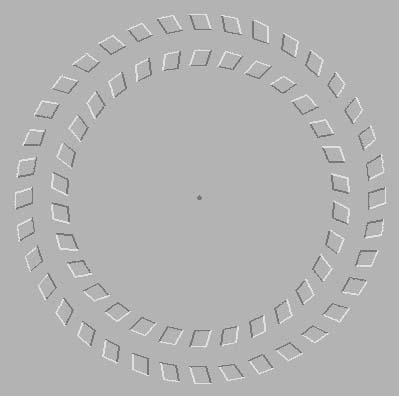Optical Illusions
Optical Illusions and their causes
Our eyes are a complicated but brilliant optical mechanism. They consist of two types of nerve cells: cones and rods. Cones detect colour, while rods detect light. Cone cells are located on the edges of the retina and are less in number. Hence, an object seen from the corner of an eye appears different than what it actually is. Due to the internal details of the construction of the human eye, vertical distances are perceived as being greater than horizontal distances of the same magnitude. An excessive exposure to a certain pattern of colours or shapes stimulates certain areas of the brain. An excessive exposure to a colour of certain brightness may tire the eyes. In such situations, eyes perceive objects differently.
Distortions and curvatures in shapes highly influence the interpretation of shapes and sizes by the brain. Using certain shades of colours together makes the coloured objects seem to have depth. Different colours absorb different amounts of light. The shades and textures of colours affect the amount of light that is reflected from coloured surfaces. These phenomena are also responsible for causing optical illusions.
Causes of Optical Illusions
The intricate yet interesting design of the optical mechanism in our eyes is one of the basic causes of optical illusions. The human eye is so constructed that the two types of nerve cells (the cones and the rods) are distinctly placed on and around our retina. The cone cells detect colour and the rod cells detect the low-light contrasts and the two types of nerve cells together convert light into neural signals. The optic nerve carries the signals to the brain. On the edges of the retina, there are fewer cones and more rods while the center of the retina has only cones. Thus seeing things from the corner of the eyes can prove deceptive. For a clear picture we need to move the eye as the sharpest images form in the center of the retina.
An excessive exposure to alternating patterns, brightness, tilt or a particular colour may affect the perceptions by our eyes. Continuous stimulation of specific regions of the brain can result in a psychological imbalance, thus affecting subsequent visual perceptions. Repeated exposure to a particular colour of a certain amount of brightness tires our eyes, due to which we may perceive things differently. Thus tiring of eyes following an excessive exposure to a certain kind of visual stimulus, can cause optical illusions.
Some artists incorporate an illusive effect in their paintings. Their works carry an intentional ambiguity about what is depicted in the picture. Distortions in size, shape and curvature can affect visual perception. Sometimes, objects, which cannot possibly exist, are made to appear in certain pictures. Here the artist's knack of bringing about an illusive appearance in his/her paintings influences perceptions by the human eye.
Illusions can be caused by certain medical syndromes like schizophrenia. Those affected by certain neuropsychological diseases may experience illusions in most of the things they see around them. It is due to their brain disorder that they mistake objects - they perceive objects differently than what they actually are. Similarly defects in the lenses lead to optical illusions. Spherical or chromatic aberrations or abnormalities like astigmatism and eccentricity can result in optical illusions. Optical illusions such as "advancing" and "retiring" colours are a result of chromatic aberrations arising out of the differences in the angles of refraction and reflection of different colours.
Differences in shades of a colour can give depths to flat surfaces. The effort involved in raising the eyes is greater than that in turning them in a horizontal plane. Owing to this difference in effort, our eyes perceive vertical distances as being greater than horizontal ones of equal magnitude. When our eyelids are almost closed, their movement makes objects appear to be moving. The concentration of objects placed in a particular area in space influences the perceptions of distance and the sizes of objects. Imagine a cube placed among other larger sized cubes and an identical cube placed among relatively smaller sized cubes. The former will appear smaller than the latter, though both the cubes are identical in size.
After all, we do not always know what we see, but we tend to see what we know. Briefly, the behaviour of light, the perception of light by the eyes and its interpretation by the brain are the main causes of optical illusions.
See this image from the correct angle

... otherwise it will appear very "strange"

The artist doing these masterpieces of pavement drawings is the Briton Julian Beever (www.julianbeever.ne)
Here are a few examples
Is this a Courtyard or Terrace ? You Decide...

Is it possible to build this gadget? Look closely and try to determine the orientation of the picture!

How many legs does this elephant have? 4, 5, 6, maybe 7?

Stare at the central dark dot and move your head back and forth.












